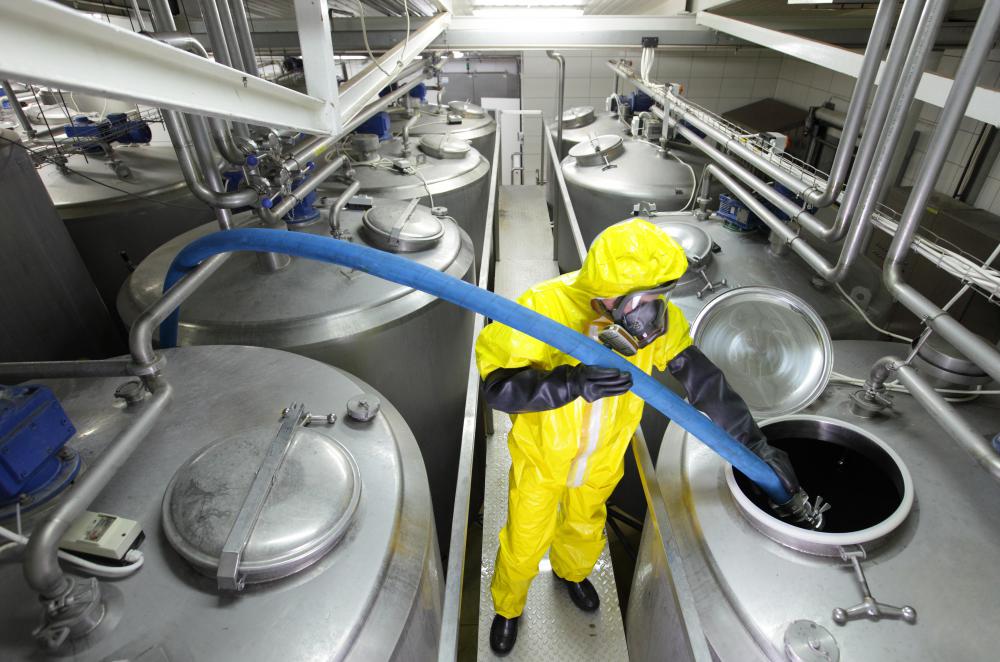At WiseGEEK, we're committed to delivering accurate, trustworthy information. Our expert-authored content is rigorously fact-checked and sourced from credible authorities. Discover how we uphold the highest standards in providing you with reliable knowledge.
What Is Industrial Biotechnology?
Industrial biotechnology represents a move away from industry’s heavy reliance on non-renewable resources, turning instead to the use of sustainable biomass as a resource. Rather than using fossil fuels and minerals, industrial biotechnology uses biomass from crops and waste products. Municipal, farm and forestry waste products in addition to specialized crops are the inputs in the production of everything from plastics to fuel. Along with this shift in raw materials, biotechnology utilizes biological processes rather than solely chemical ones in the manufacturing and energy sectors. By relying on sustainable resources, industrial biotechnology reduces greenhouse gas emissions and lessens the negative impact of manufacturing on the environment.
Symbolizing the shift towards sustainability and decreased environmental impact, industrial biotechnology is also called white biotechnology. It is promoted as a method of reducing reliance on fossil fuels, thus increasing energy security. The use of enzymes at low temperatures rather than chemical catalysts at high temperatures during manufacturing has environmental, energy, and human health benefits. These methods are utilized in chemical manufacturing, the production of textiles and paper, and the manufacture of bio-energy. Industrial biotechnology is well suited to regions with plentiful biomass resources.

As a relatively new and expanding technology, continuous research is underway to refine and improve all aspects of it. Regionally available crops and waste products are being studied for their suitability as resources. The integration of engineering, biochemistry, microbiology and other fields has lead to advances in biotechnology manufacturing. Certain regional factors, such as the suitability of the area for production of industrial-use biomass and adequate transportation systems, influence the potential for industrial biotechnology development. Conflicts involving land use competition with food crops are shifting some of the emphasis from specialized biomass crops to various residue and waste products.

Research into the conversion of biomass to energy and products focuses on efficiency, possible multiple outputs and commercial viability. Methods include biological, thermal and chemical conversion. The use of fermentation to break down biomass into usable components is one of the earliest forms of biological conversion. Thermal conversion of biomass to energy is also an ancient technology. Research in modern combustion technology focuses on increased efficiency, reduced emissions and new sources of biomass fuel.

Industrial biotechnology is one of the three realms, sometimes overlapping, of biotechnological research, development and application. Green biotechnology involves the development of agricultural products utilizing this science. Medical and pharmaceutical uses are termed red biotechnology, employing microorganisms and cell materials for diagnostic and therapeutic applications. The industrial use of biotechnology is referred to as white biotechnology. Research and advances in one area often lead to new developments in the other areas of biotechnology.
AS FEATURED ON:
AS FEATURED ON:













Discuss this Article
Post your comments